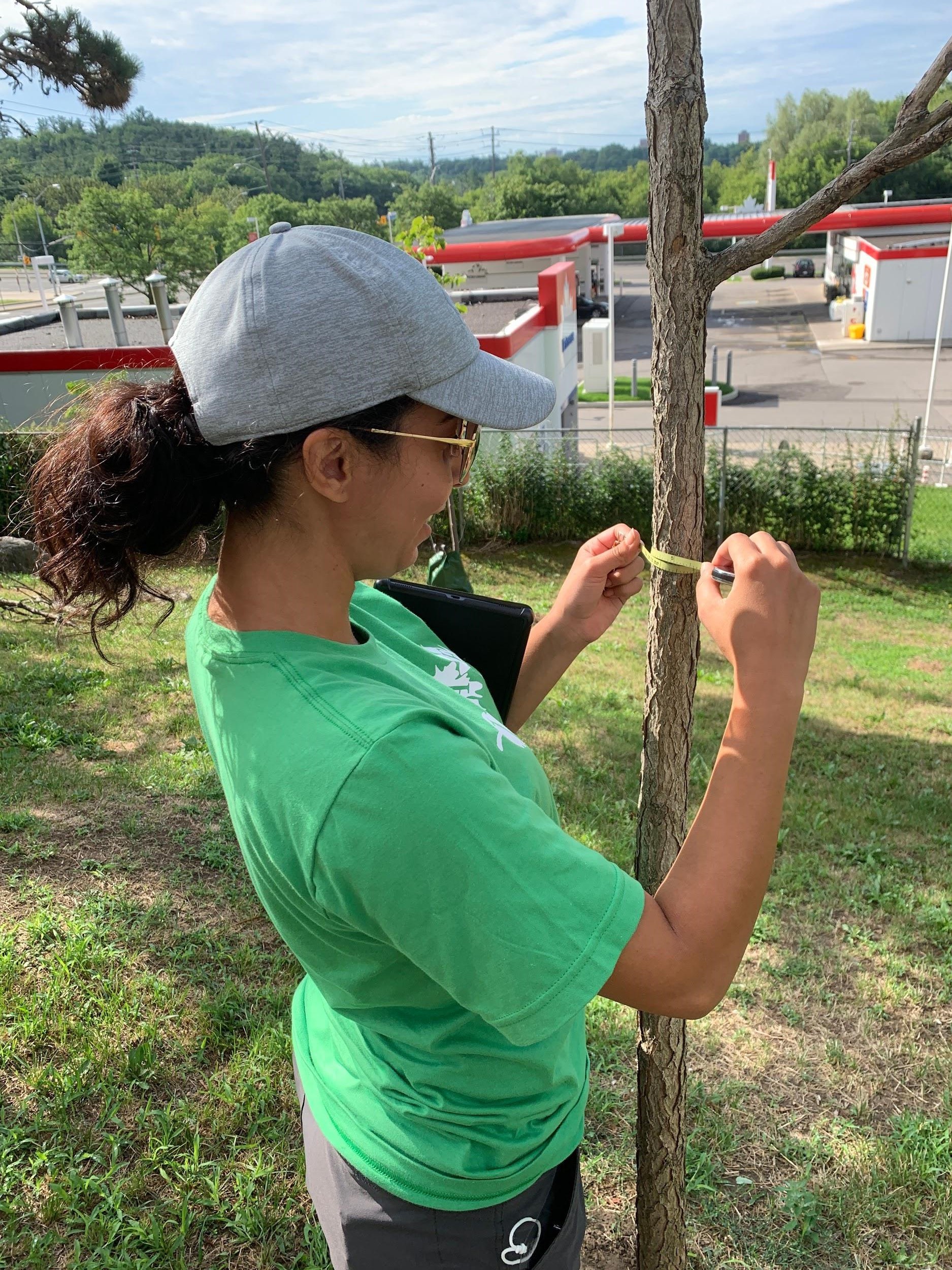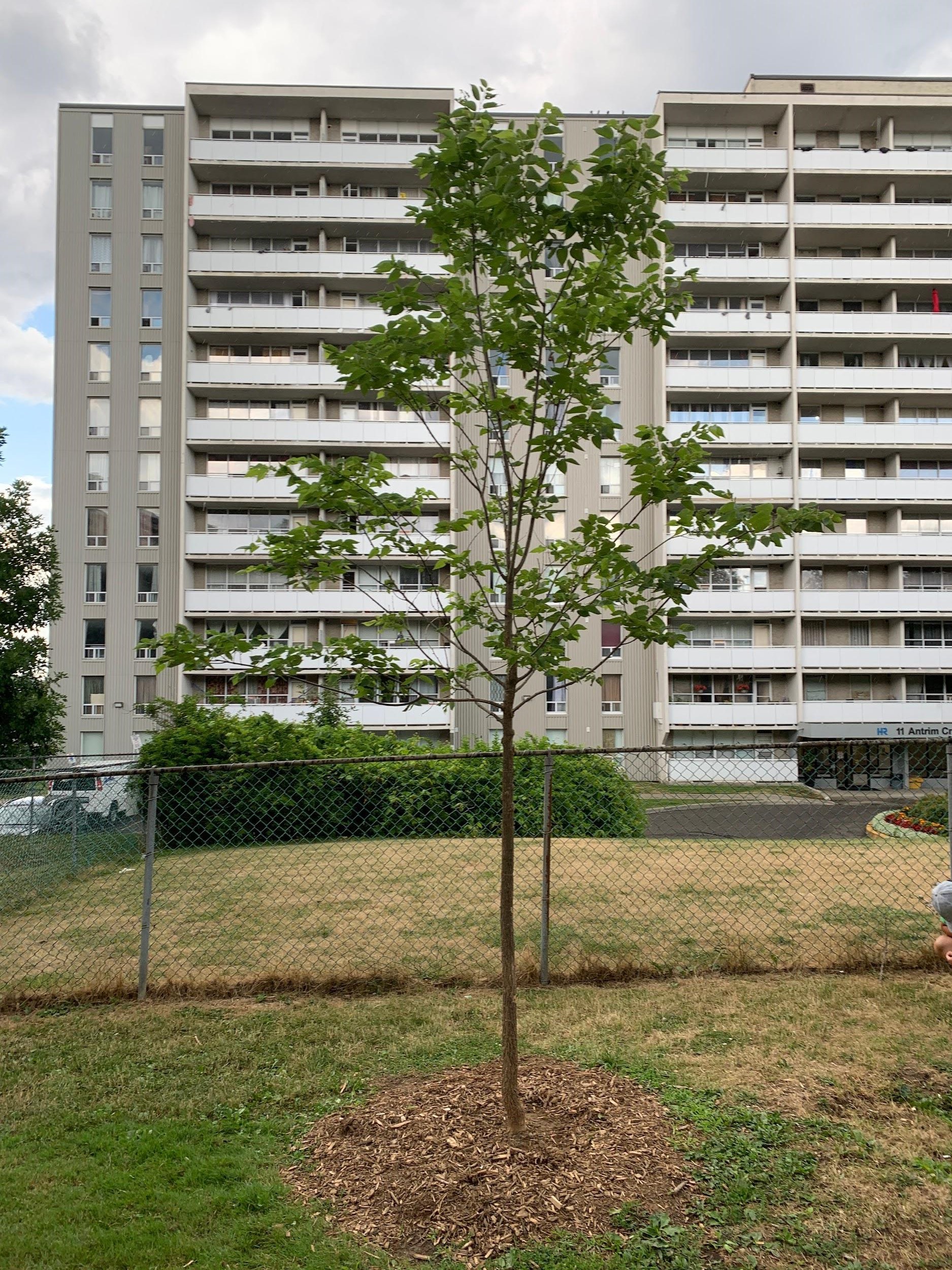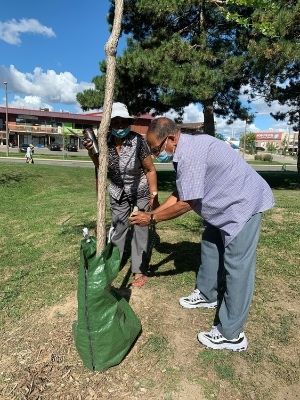
While conducting our monitoring work, we also had the chance to connect with the existing Tree Care Team at each site. These are the TCH tenants that volunteered to care for the new trees throughout the summer. We spoke on their experience stewarding the trees and they shared with us their challenges and successes.
Each of the trees planted by this project should receive around 30 litres of water two times a week during the hottest months of the year. Some sites have a large number of trees spread across a large property which demands an incredible amount of water transportation! It’s no surprise that some of the Tree Care Team
As we caught up with the Teams, we found out that there are a few trees that have received special recognition, like “Mary Lou, the Hackberry” and “Hera, the Freeman Maple,” which were both lovingly named by Merlyn, a Tree Care Team member at 6 Glamorgan Avenue. Thomas, a Tree Care Team member at 110 Mornelle Court, told us about some unique site conditions of his community, like areas with heavy winter winds. He’s looking forward to seeing the trees mature and grow to create a much-needed windbreak.
This year, we also welcomed five new Tree Care Team members! Like the Tree Care Teams established in previous years, we showed them the trees they would care for and taught them how to best support these establishing trees. Some of the activities they will be responsible for include regular watering, weeding, spreading mulch around the trees annually and observing and reporting any incidents of pests or damage.

In a recent study published by LEAF’s own Education Coordinator, Lam Tran, it was found that Toronto’s lower-income communities have significantly less canopy coverage than the city average. At the lower end of the spectrum, a TCH property on Sheppard Avenue West had just under 15% canopy cover, where the overall Toronto average reported in 2018 is set at 28.4% - 31%. Since the beginning of this Initiative in 2018, almost 140 native trees found new homes on TCH properties. This is extremely valuable since mature trees do more than provide beauty and clean air. Access to green spaces has also been linked to improved mental and physical health, among other benefits.
I’m so honoured to have had a small part in making our city a more equitable place for all through my work with LEAF this summer!
Maiesha Abdelmoula is a Stewardship Assistant at LEAF.
The Toronto Community Housing Planting and Stewardship Initiative is funded in part by the City of Toronto’s Urban Forestry Grant and supported by Toronto Community Housing.
